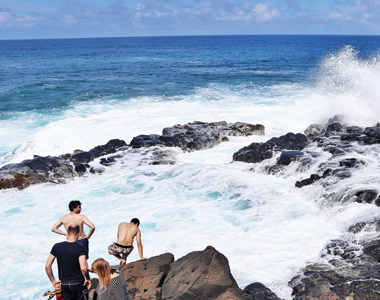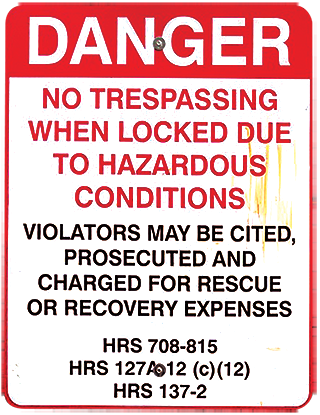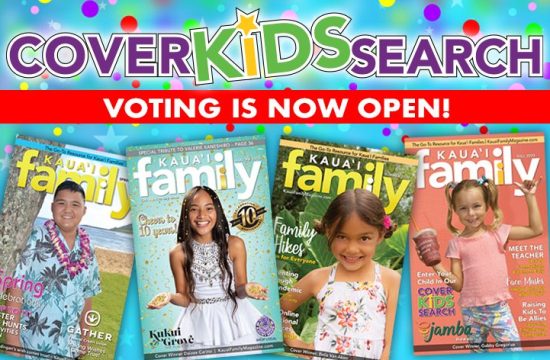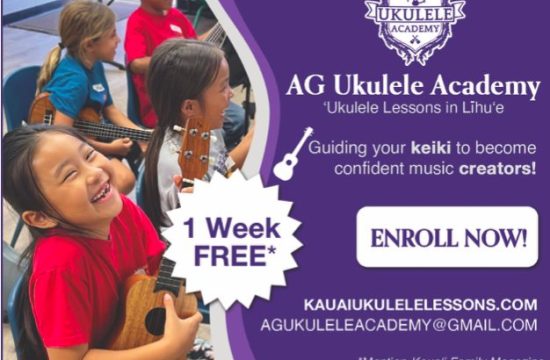
President
Kaua`i Lifeguard Association
Spring here is nowhere near as defined a season as it tends to be in colder areas. Other than the 2 aspects I just mentioned, there’s not a lot of difference between our spring and the other seasons. It may be rainy, or maybe not. As far as the ocean is concerned, the winter North swells become less frequent but they can still hit our northern shores deep into spring and all the way through May, even though we tend to think of December and January as being the peak winter North swell months.

Well, you may be able to guess from this discussion that I’m getting to Queens Bath. I’m going to ask a few hard questions, and you’ll find that my answers won’t be very satisfactory.
We again suffered a terrible tragedy a few weeks ago when a vibrant 23 year old young woman got swept to her death by a monster swell that hit the rock ledge. It’s easy to ask “how come she was there?? Not too smart. Particularly when there are gates and fences and warning signs that try and keep you from heading down to the ledge.”
(Time out here for a major THANK YOU to the Princeville Community Association for putting up these gates and fences and signs. I know they are keeping some people out, even if not as many as we wish).

I believe the internet holds one of the main keys to the allure (i.e. Google “Queens Bath” and the first thing you’ll see is a bunch of gorgeous photos). So it seems like the internet might hold the key to how to get the danger word out more clearly and strongly. As you go further in your google search you’ll start to see information about the dangers, but I’m wondering how to get the danger message to jump out as the first search items you see? We need a google expert to help us with that.
Another allure is the one that the very name Queens Bath creates, since it suggests that one of Hawaii’s queens liked to swim in the lava pool that sometimes can be found on the ledge, on days when the ledge isn’t being smashed by surf. My conversations with knowledgeable Hawaiian people indicate that this is a hogwash myth, with no basis in reality. The Hawaiian name for the ledge is Waimaumau, and just when and why “Queens Bath” came into play is a mystery, and a detrimental one.
As for the “not too smart” part of this: Speaking for myself, if the price I paid for being “not too smart” about something had been getting killed, I would have been dead long ago, and many times over. So, this was a terrible tragedy, pure and simple.
One more question is: Why does a drowning at Queens Bath command so much of our attention, since we have 7-10 drownings/year at other sites and beaches? The urgency and family tragedy of many those drownings seems to rather quickly fade from our consciousness. The best answer I can come up with for this question is that the people who get killed there tend to be young, and this shocks us more than when we hear about someone in their 70’s drowning. The loss of an “elderly” person (Ahem, I myself am 73) is extremely painful to those who know him/her and hopefully love him/her, but at least we can say that the person had a good go at life. The loss of a 23 year old doesn’t have that slightly redeeming quality.

The answer, my friend, is blowin’ in the wind. And I warned you that I would have more good questions than good answers.
I’ll close all this by pleading with anyone who reads this, don’t YOU go to Waimaumau unless you are 100% certain that there is no North swell condition in play that day.
Enjoy our Hawaiian spring, have fun, and be smart and be safe.








